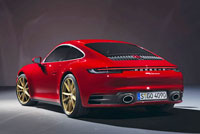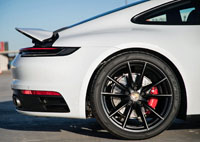
Porsche only showed its new 2021 911 Turbo S Coupe and Cabriolet models in March, and we’re already find out what they’ve got in store for next year’s 911 Carrera, Carrera S, and Carrera 4S.
The two sportier trims will soon get a new seven-speed manual transmission, but we’re not yet sure if the DIY gearbox will be standard in Canada and therefore priced lower than the current standard eight-speed automated PDK dual-clutch transmission, as it was in 2019, or if it will be no-cost option like the latest 2021 models are being offered in Europe. Fortunately, Porsche Canada will announce pricing in a few months, which will clarify this question.

PDK-equipped 911s in mind, Porsche will make its InnoDrive adaptive cruise control system available for 2021 as well. InnoDrive has the ability to automatically maintain set speed limits and slow down for corners, in addition to the usual adaptive cruise control capabilities.
Also new, optional Smartlift raises the 911’s front axle to clear steep driveways and larger than average speed bumps, while it can also be programmed to automatically remember specific locations where it needs to lift. A tire temperature readout gauge is new for 2021 911s equipped with the Sport Chrono Package as well.

In an effort to make the 911 even sportier, a lightweight glass package reduces mass up high in the body and therefore lowers the car’s centre of gravity. Only available with the Coupe, this feature will be popular with performance purists, while those wanting more refinement can opt for thicker, better-insulated glass.
Porsche looks to its past for a new leather upholstery upgrade package, introduced earlier for the base 2021 Turbo S. The retro upgrade pulls styling cues from the 930-generation 911 Turbo, and is available in both the Coupe and Cabriolet.
More trivial yet still cool, Porsche’s seven-colour Ambient Lighting Package has been renamed from the outgoing model year’s somewhat less obvious Light Design Package name, while the 911’s exterior paint palette has grown to include Python Green for 2021, a colour also offered with the 911 Turbo S and 718 Cayman GTS 4.0.
We can expect more 2021 911 details closer to launch.
Story credit: Trevor Hofmann
Photo credits: Porsche



